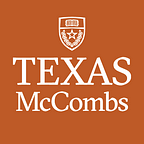Hail a Ride, Cut Hate Crime
The entry of Uber into markets leads to significant reduction in racial hate crimes across the country
Based on the research of Andrew Whinston
A 2021 survey by AAPI Data found that 22% of Americans had been victims of a racial hate crime: suffering verbal or physical abuse or property damage because of their race or ethnicity. The following year, FBI statistics showed a 7% increase in hate crime reports, while other violent crimes were going down.
New research by Andrew Whinston, professor of information, risk, and operations management at Texas McCombs, finds an unlikely tool for reducing such crimes: ride-hailing services.
Analyzing both crime statistics and start dates for the ride-hailing company Uber, they find that launching Uber service was followed by an average decline of 5.75% in racially motivated hate crimes across more than 700 metropolitan counties in almost every state.
The reason, they find, is the power of human contact. Short but intimate car trips facilitate meaningful interactions between people of different backgrounds, leading to increased mutual understanding.
“A better relationship comes from the interaction of the customer and driver chatting during the ride,” explains Whinston, who also is the Hugh Roy Cullen Centennial Chair in Business Administration and director of the Center for Research on Electronic Commerce at The University of Texas at Austin.
Contacts Reduce Conflicts
The concept of contact goes back to 1954, the year the U.S. Supreme Court ruled the racial segregation of public schools unconstitutional. That same year, Harvard University psychologist Gordon Allport published a seminal book on prejudice. He argued that increasing face-to-face contact between members of majority and minority groups would reduce discrimination and associated conflict, a position known as “contact theory.”
Whinston and his co-authors — Lin Qiu of the Southern University of Science and Technology and Bernard Tan and Dandan Qiao, both of the National University of Singapore — believed Uber rides might provide a novel real-world setting for putting that theory to the test.
One of the authors had noticed anecdotally that race relations seemed to improve in places where Uber had begun operating. Says Whinston, “This seemed to repeat itself in several different areas. We tried to understand why, compared with nearby areas without service.”
To find out whether the Uber effect was widespread, the researchers pulled FBI hate crime statistics for 1,083 of the nation’s 1,167 metropolitan counties — home to 85% of the population. They focused on the three largest categories: crimes motivated by race, religion, and sexual orientation.
They then looked at 763 of those counties in 46 states in which Uber operated, with most start dates occurring between 2014 and 2017.
Uber, they found, had little or no impact on crimes motivated by religion or sexual orientation. But it significantly decreased rates of racially motivated ones.
Why would Uber affect racial hate crimes more than other hate crimes? The reason, Whinston speculates, is that it’s easier to visually identify someone of a different race than it is someone of a different religion or sexual orientation.
The findings also supported contact theory, because the decreases were most apparent in counties whose demographics provided more opportunities for inter-group contacts. They had robust middle-income populations — the segment that uses ride-hailing most often — and higher levels of racial and ethnic diversity. Cities in those counties included Aurora, Colorado; Bakersfield, California; and St. Petersburg, Florida.
Conversations Change Attitudes
To back up the data analysis, the team also surveyed 500 Uber drivers and 1,003 passengers about their backgrounds and encounters with people of other races and religions. The results reinforced the significance of contact.
● Interactions during rides were common, with 70% of drivers and 43% of passengers conversing with each other “very often” during rides.
● A significant share of those interactions was interracial, with 70% of drivers encountering passengers of different races “very often,” while 87% of passengers had such encounters with drivers “very often” or “from time to time.”
● The interactions were overwhelmingly positive, with 74% of drivers and 44% of passengers reporting improved attitudes toward people of other races though their conversations during rides.
These findings have important practical implications as well as theoretical ones, says Whinston. They give policymakers another potential tool to combat hate crimes, by fostering the growth of ride-hailing. He adds that Uber should pay attention, too.
“Uber may find it interesting, because it’s a positive thing for Uber,” he said. “They have a business model that unintentionally, from a social point of view, brings a significant benefit. When Uber wants to enter a community, this could be a useful thing for them to bring up.”
“Leading the Horse to Water? Investigating the Impact of Ride-hailing Services on Hate Crimes” is published online in Production and Operations Management.
Story by Kiah Collier
